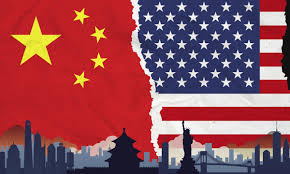US and China Announce Tariff Pause

Oil prices, stock markets, and the dollar experienced a rally following an announcement by the US and China regarding a 90-day truce in their trade war. This de-escalation came after face-to-face interactions in Geneva, marking a significant shift since President Trump's imposition of tariffs on global trading partners. The agreement involves both countries drastically reducing tit-for-tat tariffs, offering a respite from the economic fallout of the prolonged trade war.
The agreement stipulates that the U.S. will lower tariffs on Chinese goods from 145% to 30%, while China will reduce its tariffs on U.S. goods from 125% to 10%. This reduction aims to limit potential economic disruptions and improve the demand outlook for oil prices. The market responded positively, with Wall Street's main stock indices jumping, safe havens declining, and expectations for Federal Reserve rate cuts being scaled back.
Treasury Secretary Scott Bessent described the discussions as "productive" and "robust," indicating a desire for a more comprehensive agreement in the coming weeks. While the U.S. seeks "decoupling for strategic necessities," it does not aim for broad decoupling from China. The 90-day pause also serves to assess non-tariff barriers affecting U.S. firms. China hailed the "substantial progress" made, expressing hope that Washington would continue working towards correcting unilateral tariff rises.
Despite the optimism, some analysts urge caution, noting that financial markets may remain volatile. Concerns linger over potential obstacles in trade negotiations and the possibility of things worsening before improving. The suspension of higher tariffs is seen as a substantial de-escalation, but there is no guarantee of a lasting ceasefire. Washington's higher levies on China and attempts to rally others towards trade restrictions with China add to the uncertainty.
Most Asian stocks extended gains following the tariff suspension, fueled by hopes of the world's two economic superpowers stepping back from a punishing trade war. Top-level negotiators indicated that the U.S. would reduce its duties on China, while Beijing would cut its retaliatory measures. President Trump described the move as a "total reset" and anticipated talks with President Xi Jinping soon. However, some nervousness remains, with analysts pointing out that even at the paused levels, tariffs are still higher than previously imagined, and the full impact is yet to be seen in economic data and company earnings.
The US and China have agreed to temporarily slash their steep tariffs on each other, sending global stocks and the dollar surging, as the world’s top two economies tapped the brakes on a trade war that had fed fears of a global recession. Financial markets cheered the reprieve in a conflict that had brought nearly $600 billion in two-way trade to a standstill, disrupting supply chains and triggering layoffs. Investors had also worried about stagflation, a toxic combination of high inflation and weak economic growth, a Reuters report said.
According to reports from May 12, 2025, the NASDAQ's nearly 4% premarket surge reflects market optimism following the U.S.-China 90-day tariff de-escalation agreement. The deal slashes U.S. tariffs on Chinese imports from 145% to 30% and Chinese tariffs on U.S. goods from 125% to 10%, marking a significant thaw in the trade war. The S&P 500 and Dow futures also rose, by 3% and 2.4%, respectively. The 90-day window introduces uncertainty, as tariffs could revert if no permanent deal is reached.
The tariff reduction aims to lower costs for businesses and consumers, driving gains for tech firms reliant on Chinese manufacturing. Reduced tariffs alleviate supply chain bottlenecks, potentially lowering inflation pressures. Uncertainty remains, as failure to reach a lasting deal could see tariffs snap back, reigniting market volatility. The agreement highlights the divide between pro-deal beneficiaries (corporations, consumers, globalists) and skeptics (domestic industries, hawks, labor), underscoring competing priorities.










